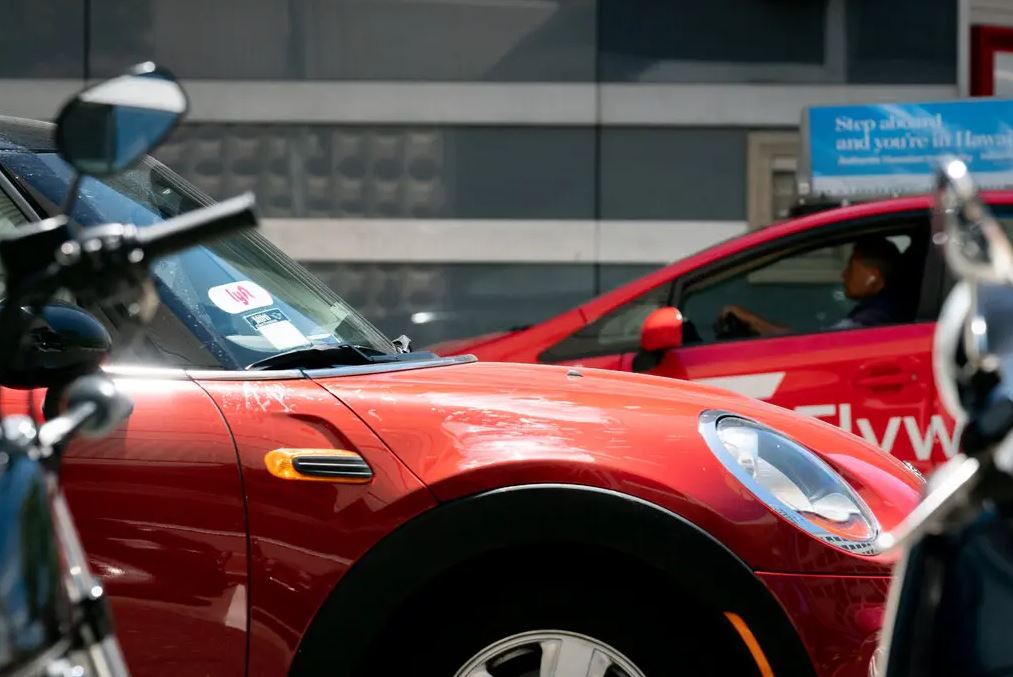Uber’s goal to get more cabs onto its platform over the next few years might take another significant step forward in the near future.
According to four people familiar with the matter and a video presentation by the city’s transportation agency that was viewed by The New York Times, the company is nearing completion of an agreement with a San Francisco partner, Flywheel Technologies, to allow Uber passengers in the city to call a taxi through the Uber app.
After that, the San Francisco Municipal Transportation Agency’s board of directors will vote on whether to accept changes to a pilot programme at its meeting on April 5, according to the agency. Uber and Flywheel, which runs an app used by hundreds of taxi drivers in San Francisco from a variety of cab firms to take trips, would then need to get approval from the city’s director of transportation, opening the way for the two businesses to collaborate.
The pact, which comes on the heels of a similar relationship between Uber and taxi businesses in New York City that was revealed last week, would signal a dramatic shift from the years of bitter competition that had existed between the two organisations. If the cooperation in San Francisco is allowed by officials, it could begin as soon as May.
Uber has criticised the taxi business as dishonest and greedy, and a San Francisco cab firm previously filed a federal lawsuit against Uber, accusing the corporation of engaging in exploitative pricing tactics. Some taxi drivers are opposed to the concept of forming a partnership, fearing that it would result in decreased wages and make it more difficult for long-term taxi clients to get reasonable transportation.
Even before the epidemic, the taxi business had been losing clients to ride-hailing services like as Uber and Lyft, which have since become more popular. According to the Municipal Transportation Agency, the number of taxis in service dropped to 400 during the pandemic — down from 1,300 — before rising to 600 again once the outbreak ended. The combination of taxi drivers with Uber might provide taxi drivers with access to a much bigger pool of passengers, while Uber would get supply in the form hundreds of taxi drivers.
Uber now wants to participate in the experiment, but with a twist: if the city of San Francisco approves the participation of so-called “third-party dispatch services” like Uber, the upfront cost that Uber charges customers to get a taxi through its app will not be required to be the same as the cost of a metered taxi ride. In other words, they might charge the same amount as a standard UberX vehicle trip, which is often less expensive than a taxi fare.
He believes that the Uber alliance would benefit taxi drivers and that it may even help rescue the business, according to Muwaffaq Mustafa, 53, who has been driving taxis for decades and now now handles operations for Flywheel Taxi, which formerly sued Uber. He predicted that increased demand would more than make up for the somewhat cheaper fares.
George Lama, 60, a taxi driver in San Francisco for the last 20 years, said that the collaboration was necessary since clients no longer utilise cabs at any time. He claimed he waits outside hotels in a queue of cabdrivers to pick up customers, but they instead book Ubers to take them to their destinations.
According to Hansu Kim, the president and co-owner of the Flywheel taxi-hailing app, the taxi industry’s attitude to technology is similar to “dinosaurs that are still in the tar pits,” and he is in talks with Uber to assist taxi drivers in gaining access to ride-hailing clients.
Despite the fact that Uber claims to have seen driver numbers rebound in recent months after many left during the height of the pandemic, many drivers continue to complain of low earnings, and some have quit the platform or reduced their driving hours as gas prices have risen.
Taxi drivers, according to the Municipal Transportation Agency, will also reap the benefits. “The taxi industry is leveraging Uber’s large riding population and pushing that population toward the taxi industry,” Forest Barnes, a transportation planner for the agency, told taxi drivers in a recent Zoom meeting that was viewed by The Times. “Uber’s large riding population and pushing that population toward the taxi industry,” Barnes said.
If the agreement results in increased revenue for taxi drivers, it is possible that some ride-hailing drivers would contemplate switching to taxi operations instead of ride-hailing. Some cab drivers, on the other hand, are opposed to the merger.

